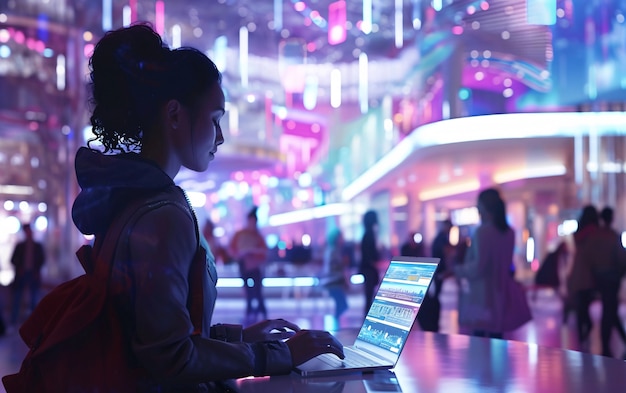The landscape of live events is rapidly evolving, driven by technological advancements and changing audience expectations. Whether you’re an event organizer, performer, or attendee, understanding these trends can help you make the most of your live event experiences. Let’s dive into the top trends reshaping live events’ future.
Hybrid Events: The Best of Both Worlds
Gone are the days when events were strictly in-person affairs. Hybrid events, combining physical and virtual elements, are becoming increasingly popular. This trend allows you to reach a wider audience while providing flexibility for attendees.
Imagine attending a music festival where you can dance in front of the stage or tune in from your living room. Hybrid events offer this level of choice. For organizers, this means potentially unlimited ticket sales and reduced overhead costs. For attendees, it provides access to events that might otherwise be out of reach due to geographical or financial constraints.
But hybrid events aren’t just about streaming a live feed. They’re about creating engaging experiences for both in-person and virtual attendees. This might include virtual meet-and-greets, interactive online workshops, or augmented reality experiences that blend the physical and digital worlds.
Sustainability Takes Center Stage
As environmental concerns grow, sustainable event planning becomes necessary rather than a nice-to-have. This trend goes beyond simply recycling or using biodegradable materials. It’s about rethinking every aspect of event planning with sustainability in mind.
You might see events powered by renewable energy sources or food vendors using locally sourced, organic ingredients. Some festivals even implement carbon offset programs, allowing attendees to neutralize their travel emissions.
This focus on sustainability is good for the planet and for business. Many attendees, especially younger generations, are more likely to support events that align with their values. By prioritizing sustainability, event organizers can attract environmentally conscious audiences and create positive brand associations.
Personalization and Customization
One-size-fits-all events are becoming a thing of the past. Today’s attendees expect personalized experiences that cater to their interests and preferences. This trend is driven by data analytics and AI technologies that can track attendee behavior and preferences.
For organizers, this trend means investing in data collection and analysis tools. It also requires a shift in mindset—from creating a single event experience to curating multiple pathways through an event. While this may seem challenging, the payoff for attendee satisfaction and loyalty can be significant.
Enhanced Safety and Security Measures
Safety has always been a priority for event organizers, but recent global events have brought it to the forefront. Advanced security measures are now a crucial part of event planning and execution.
Take the Sunfest Music Festival, for example. Organizers implemented SaferWatch, a cutting-edge security system, to manage crowds and enhance public safety. This technology allows for real-time monitoring and quick response to potential issues, creating a safer environment for all attendees.
But safety isn’t just about physical security. It includes health measures like touchless check-ins, sanitation stations, and improved air filtration systems. These features protect attendees and provide peace of mind, which is crucial for encouraging participation in live events.
Immersive Technologies: AR and VR
Augmented Reality (AR) and Virtual Reality (VR) transform live events, blurring the lines between the physical and digital worlds. These technologies offer new ways to engage attendees and create memorable experiences.
VR can provide a more immersive experience for virtual attendees than traditional video streaming. You might be able to ‘walk’ through a virtual venue, interact with other attendees, or even get a backstage pass – all from the comfort of your home.
While the hardware for these technologies is still evolving, early adopters are already seeing the benefits of attendee engagement and satisfaction.
Data-Driven Decision Making
In the past, event planning often relied on gut feeling and past experiences. Today, data is king. Every aspect of an event can be measured and analyzed, from ticket sales to attendee movement patterns.
This wealth of data allows organizers to make informed decisions about everything from event layout to pricing strategies. For example, dynamic pricing models that adjust ticket costs based on demand or real-time crowd flow management that prevent bottlenecks before they occur might be seen.
For you as an attendee, this data-driven approach can lead to smoother, more enjoyable experiences. Lines might be shorter, food and drink options more aligned with preferences, and schedules optimized to reduce conflicts between popular sessions.
The Rise of Micro-Events
While large-scale events will always have their place, there’s a growing trend towards smaller, more intimate gatherings. These micro-events offer a more personalized experience and can be easier to organize and attend in uncertain times.
You might see pop-up concerts in unexpected locations, small-group workshops with industry experts, or exclusive VIP experiences at more significant events. These micro-events can create a sense of exclusivity and allow for deeper connections between attendees and performers or presenters.
For organizers, micro-events can be a way to test new concepts, reach niche audiences, or create additional revenue streams. They can also be more agile, allowing quick adjustments based on attendee feedback or changing circumstances.
Conclusion
As we look to the future of live events, it’s clear that technology will play a central role. From enhancing safety measures to creating more personalized and immersive experiences, these trends are reshaping what it means to attend a live event. Whether you’re planning an event or looking forward to attending one, keeping these trends in mind can help you make the most of the experience. The future of live events is exciting, dynamic, and more accessible than ever before. Are you ready to be part of it?


